By Kelly Bell
The old axiom that “forewarned is forearmed” is as true nowadays as it was millenia ago. Since 1989 America’s B-2 Spirit flying wing has been assailing the Free World’s foes, and consistently taking them unawares. With its design making it virtually invisible to radar its $2 billion apiece price tag is literally a bargain. A product of the Cold War, the Spirit was intended to attack targets deep within the Soviet Union and although it has never flown inside Russian airspace, it soldiers on as a vital guardian of freedom.
The concept of flying wings—airplanes without tails, fuselages or external protuberances—has been around from the beginning of heavier-than-air flight. Even the Wright’s rickety kite of 1903 closely resembled this design. Prior to the First World War both Russia and Germany studied the design, but the war ended before any prototypes could take to the air. American aircraft designer Jack Northrop pioneered (and successfully test-flew) his version as early as 1940. Late in World War II the Germans desperately worked on the Horten (Ho) 229, a flying wing with rudimentary stealth characteristics, and which the Spirit resembles.
After perusing the plane’s schematics in December 1944 Luftwaffe chief Hermann Göring was very enthusiastic about its potential, and ordered 40 from the Gothaer Waggonfabrik Corporation. The first test flight near Oranienburg on February 2, was moderately successful as test pilot Lt. Erwin Ziller took the aircraft aloft and brought it down safely. A second test did not go so smoothly.
Ziller was cruising at 1,000 feet on February 18 when one of the two engines erupted in flames and the machine went into a corkscrew descent. Ziller didn’t radio or try to bail out—he may have been unconscious from fuel fumes—before the plane slammed into the ground just outside the airfield and disintegrated. He died two weeks later.
Work on an updated version of the Horten 229 (dubbed the Horten 229 A-O) was immediately commenced, but time ran out for the Third Reich. In April, U.S. Army Gen. George Patton’s Third Army captured the only four prototypes.
At this time Northrop was working on a design he dubbed the N-1M. It was a step in the right direction, but proved to be strictly a prototype never to see action. On its maiden flight, test pilot Vance Breese reported it never got higher than five feet off the runway. This prompted adjustments to the trailing edges of the elevons and wingtip rudders. It would not be enough.
When trials resumed, test pilot Moye W. Stephens got the machine to a respectable altitude and stable flight, but it was too heavy to easily maneuver. Its two 65-horsepower Lycoming 0-145 four-cylinder engines were supplanted by a pair of 120-horsepower, six-cylinder 6AC264F2 air-cooled Franklin engines. Stephens tirelessly flew the plane, trying to make it work, but in November 1941, after 28 flights, he reported that when attempting to fly the N-1M around its vertical axis it would invariably make a “Dutch Roll” (simultaneously yawing and rolling from side to side).
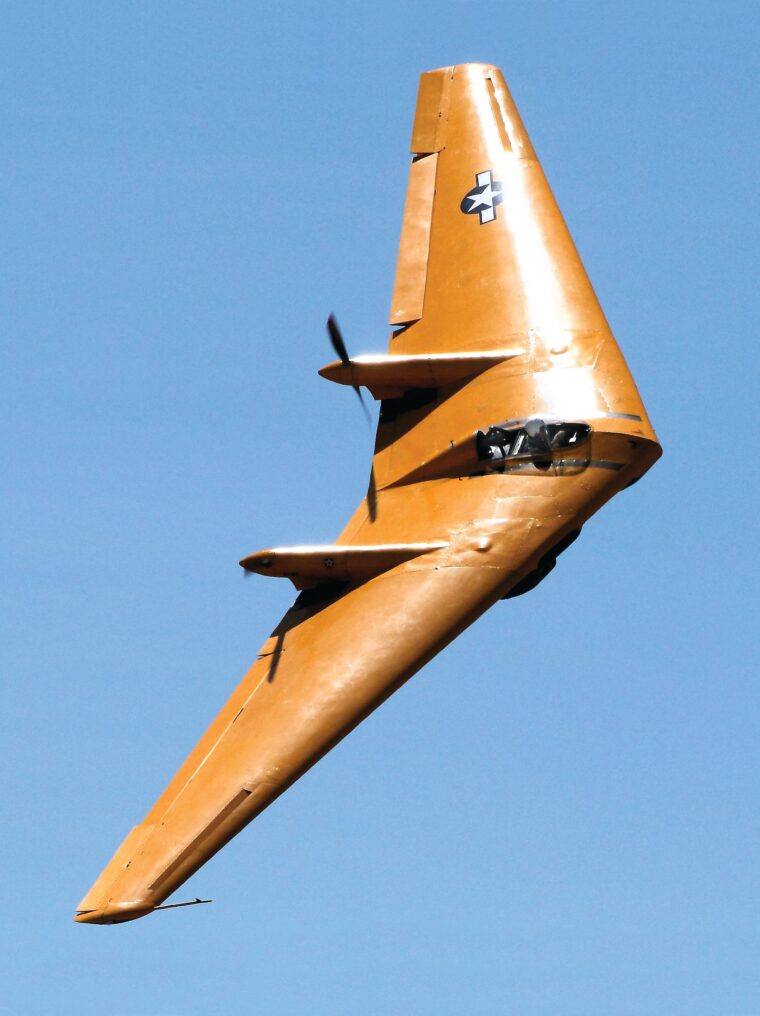
Adjustments to the wing configuration somewhat rectified this problem, but rapidly proliferating jet technology rendered the prop-driven N-1M obsolete even before it could be perfected. The sole prototype is still on display in the National Air and Space Museum.
A British-made flying wing designated the A.W. 52 and drawn up by the Armstrong-Whitworth Company was tried out soon after the war. In a test flight of the first prototype on May 30, 1949, the craft only made it to 320 mph before it experienced violent pitch oscillation caused by elevon flutter. Fearing his bird was about to literally shake itself to pieces, the pilot ejected. For several years the Royal Aircraft Establishment periodically used the second A.W.52 for experimental flying before scrapping it in 1954.
The American-built XB-35 flying wing was a propeller-driven machine that never overcame its early problems. Its contra-rotating props caused severe drive shaft vibration that exacerbated engine fatigue. Its gearboxes were notoriously unreliable, cutting into the effectiveness of propeller control. Northrop attempted to rectify this by installing four-blade, single-rotation props. But the new screws had little effect on the destructive vibration and it reduced the aircraft’s speed and overall performance. Also, the over-complicated exhaust system was difficult to maintain. It did not take long for the engines to develop metal fatigue.
Internal policies were another shortcoming—the Northrop Corporation had more projects than its engineering staff could handle. This factor, along with the obsolescence of the plane’s reciprocating propeller engines, ensured the program was behind schedule and over budget.
After building and test flying two prototypes, Northrop could see the XB-35 would not work. After 27 flights by the two experimental planes, he canceled the program in 1953.
Development of a jet-powered flying wing had begun in June 1948, but it, too, initially never got off the ground. Designated the YB-49, its range was limited by its six gas-guzzling jet engines. Production was canceled on March 14, 1950, and shortly thereafter the only prototype crashed and burned during a high-speed taxiing accident.
Two months later, Secretary of the Air Force Stuart Symington summarily canceled all flying wing contracts. Northrop’s son, John Jr., later said in an interview that his father had been devastated by this action and suspected the flying wing program was aborted by back-room negotiations between the Convair Corporation and the Air Force. The last Northrop flying wing sat forsaken and neglected at Ontario Airport for two years before being scrapped on December 1, 1953. Even then the design had a long history.
The earliest version, N-9M, first flew on December 27, 1942. But its Menasco engines and its flaps were unreliable. Test pilot Max Constant died in a 1943 crash when he was unable to pull out of a nose-down spin.
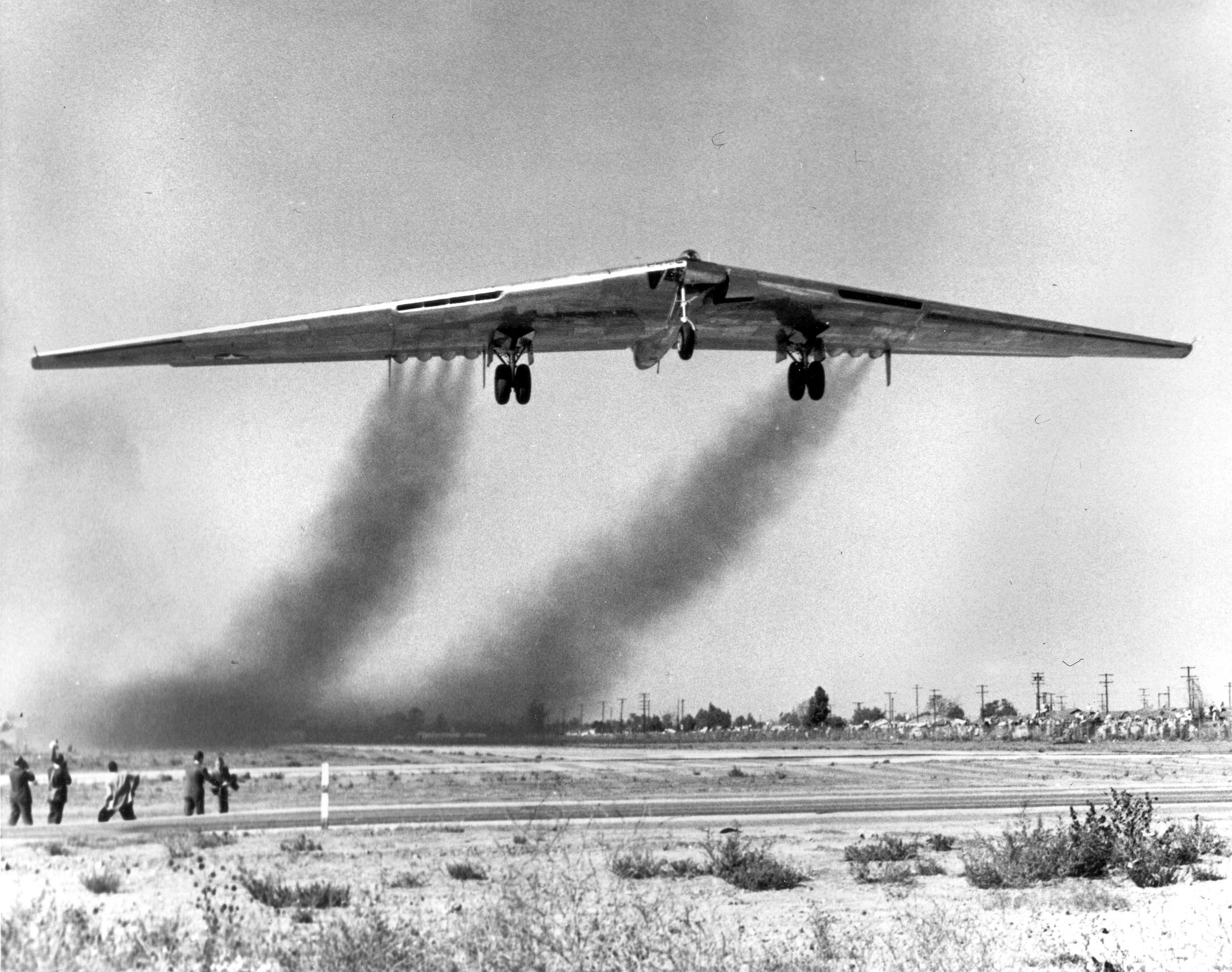
The subsequent investigation indicated Constant had experienced “control reversal.” When he yanked back on the control column it jammed against his chest, preventing him from bailing out. The problem was permantly fixed, but the plane was quickly bypassed by the technological leaps spawned by the Second World War.
The Air Force mothballed the remaining prototype until 1982, when it was sold to the California Planes of Fame Air Museum, where it was restored to flight status for nationwide at air shows. On April 22, 2019, this last N-9M crashed into a prison yard in Norco, California, killing the pilot and scattering the terrified convicts.
In the late 1970s, President Jimmy Carter canceled the high-speed B-1A bomber program, citing expense, but authorized an “Advanced Technology Bomber,” or “Stealth Bomber,” that would incorporate radar-evading technology via a revolutionary new configuration.
In October 1981 the U.S. Air Force unexpectedly awarded the Northrop Corporation a $7.3 billion contract for the program. Though Northrop had not built any bombers since World War II, they had been working on stealth technology since the mid-1960s.
In collaboration with Grumman, Northrop had been studying radar evasion at a research facility in Rancho Palos Verdes, California. Calling their prototype “Tacit Blue,” the firms concentrated on the flying wing design because it had long been recognized as having a minimal radar signature. Though Northrop’s initial prototypes were never picked up by the Air Force, their creation provided a starting point for the Northrop-Grumman project. Finally, on November 22, 1988, a state-of-the-art flying machine called the B-2 rolled out of a hangar at Air Force Plant 42 in Palmdale, California.
The crowd of onlookers was kept 70 yards away from the plane called “Spirit” to prevent any detailed observation of its features, among which were four General Electric F118-GE-100 non-afterburning turbofans. The $515-million price tag worried Congress, especially considering how the Soviet Union was tottering on its last legs, and the specter of thermonuclear war seemed diminished. Only 21 would be built.
The Spirit is 69 feet long and 17 feet high, with a wingspan of 172 feet. Its top speed is 680 mph with an unrefueled range of 6,000 miles. With a ceiling of 50,000 feet, it is virtually as undetectable to the naked eye and unassisted ear as it is to radar.
Its two weapons bays can hold a whopping 30 tons of ordnance. Each bomb bay contains eight bomb racks that in a nuclear role can carry sixteen B61-7 bombs, B61-11 bombs or B-83-1 thermonuclear bombs. The plane is also fitted to bear the recently developed B-61-12 bomb with a “dial-a-yield” configuration.
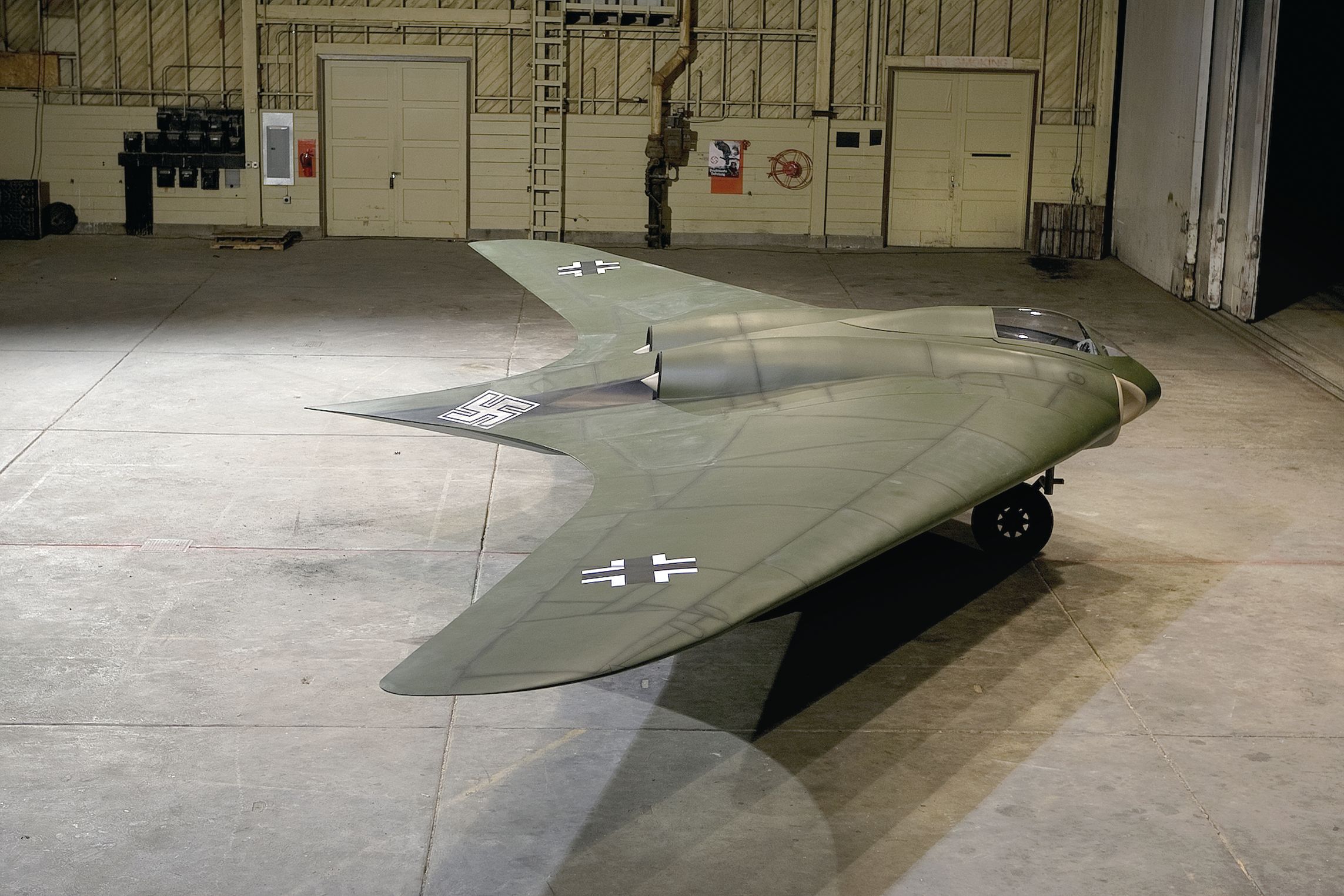
Non-nuclear payloads include 16 Joint-Direct-Attack-Munition satellite-guided 2,000-pound bombs. Before submunition-dispensing weapons were phased out of U.S. armaments, the bomber carried CBU-87 Combined Effects Munitions and CBU-90 Gator mine dispensers. It still carries the AGM-154 Joint Standoff Weapon, which is a glide bomb with a 50-mile range. In case of standoff attacks Spirit can pack the AGM-158 Joint Air-Surface Standoff Missile and the extended-range JASSM-ER. Lastly the machine can heft two 30,000-pound, 20-foot-long Massive Ordnance Penetrator bombs for use on hardened targets.
After its inaugural flight in 1989, the first B-2 was stationed at Missouri’s Whiteman Air Force Base, which still houses a massive air fleet. The Spirit first flew in action in the Kosovo War in 1999, hammering targets in Yugoslavia. One of the most sophisticated warplanes ever built, it can reach any objective in the world and, via aerial refueling, return to any base. Not one has ever been lost in action.
“Seen from the cockpit the flying wing is so distinctive,” said aerospace specialist Rebecca Grant, who has flown in the plane. “It is very special—more of a sentient being than just a regular airplane. Maybe that’s why all of the B-2s are rumored to have unique personalities and they’re often referred to as ‘she.’”
Along with the 50-year-old Rockwell B-1 Lancer and the venerable, constantly upgraded B-52 Stratofortress, the Northrop-Grumman B-2 is one of three strategic heavy bombers serving in the U.S. Air Force. Still, the B-1 and B-52 were unable to cater to the need for virtual immunity to hostile fire while still being able to carry a hefty bomb load. The need for stealth technology really surfaced in the 1970s, and is still a vital component of modern warfare.
“It was a Cold War product, but also a product of a big technological breakthrough in designing an airplane to be stealthy,” Grant said. “The mission of the B-2 was to elude Russian air defenses, both their surface-to-air missiles and their top-line fighter aircraft, and that’s still its mission today, to elude the best enemy air defenses wherever we find them.”
Spirit’s main innovation has always been her distinctive outline, which, as Grant puts it, “alters the radar reflection.”
Without large vertical outlines, such as a tail, radar waves scatter off its smooth exterior without returning to the source. If it is picked up on radar at all, it has a signature the size of a seagull. In 1962 the Soviet Union, in rich irony, cleared for international publication a book by Russian physicist Pyotr Ufimtsev in which he extrapolated on the concept of radar-scattering. The Soviets allowed publication of his theory because they did not take the idea seriously. Americans did, and profited. There are other aspects of the B-2 that give it claim to the appellation “stealth” bomber.
Airplanes emitting heat are visible to the naked eye and radar. The tiles that keep Spirit cool have been so successful that they were used as re-entry heat shields by the designers of the Space Shuttle.
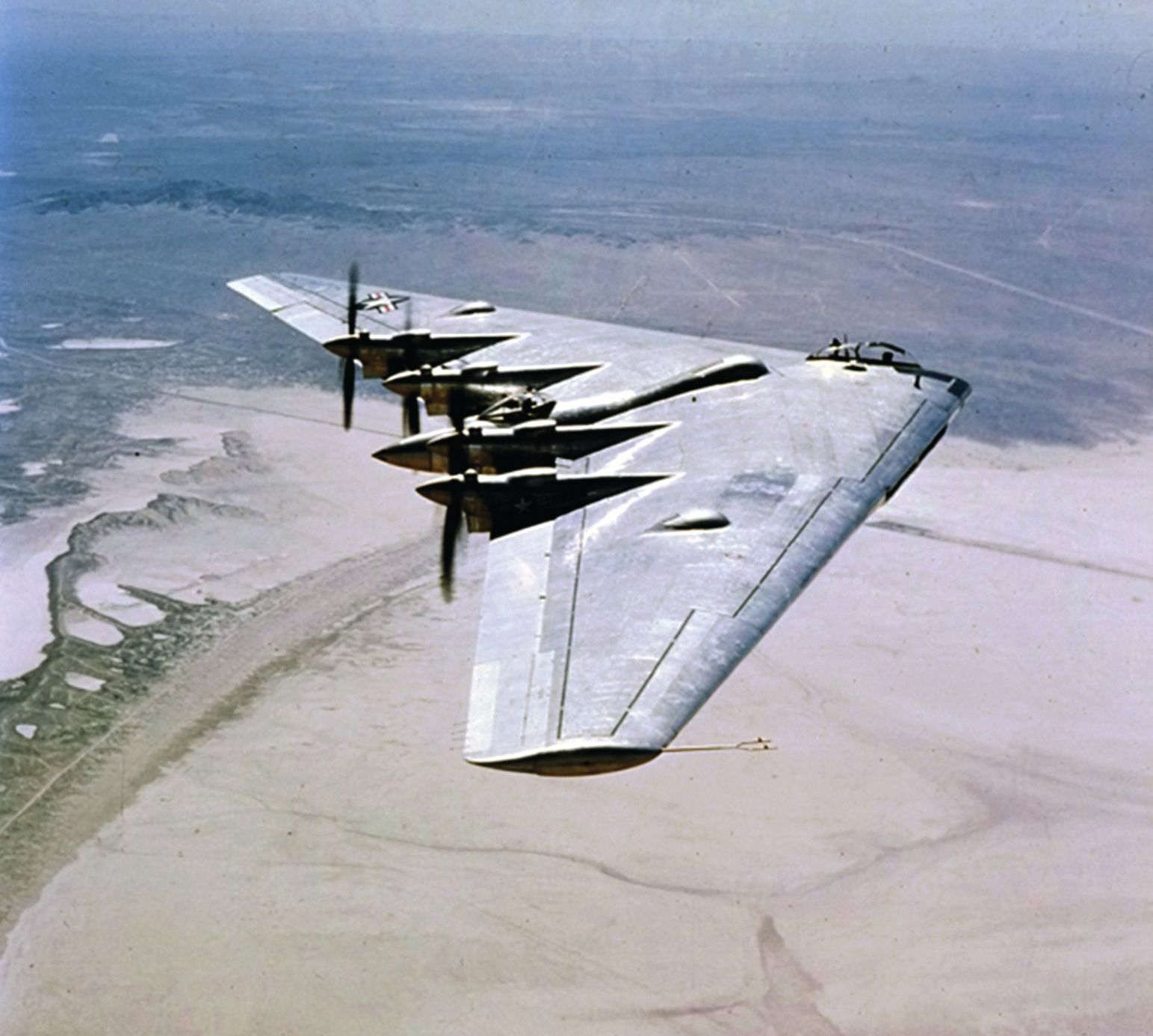
“There are also radar-absorbing coatings and materials, and you can’t see its engines because they are tucked away in the aft section,” says Grant.
There is even an on-board apparatus that informs the crew if they are leaving a contrail, allowing them to alter their altitude in order to stop dragging a vapor trail. Lastly, the B-2 is a very quiet machine. Flying at lower heights it can rarely be heard until as much as a minute after passing overhead—at high altitudes for combat operations, it cannot be heard at all,
The array of stealth gadgetry is collectively known as “low observable technology,” and can be used on an as-needed basis. Upon entering hostile airspace, the pilot presses a button labeled “PEN” to activate the stealth wizardry.
“Just like any combat aircraft, when you’re near the threat you do a bunch of things to get ready to penetrate,” says Grant. “They won’t tell you the whole procedure, but it’s true. They do ‘stealth up’ when they come near the target area.”
As with conventional bombers past and present, most of the Spirit’s air time is spent monotonously droning to and from targets. A 2001 mission flown from Missouri to Afghanistan lasted a whopping 44 hours. The designers made allowances for such lengthy flights by incorporating a flat space with a cot behind the cockpit where pilots and co-pilots can take turns napping. There is also a stocked refrigerator, pantry, microwave and toilet. Such comforts help distract the crew from the fact that their bird has no defensive armament.
Spirit has successfully delivered bombs in the 1999 Kosovo war, the Iraq war in 2003, in the war on terror against the Taliban and Al Qaeda following 9/11 and in Libya in 2011. Logistical demands such as the need for constantly air-conditioned hangars restrict Spirit to a very few, accommodating locations. Her main base in Whiteman Air Force Base is 38 hours from Iraq, requiring four to five aerial refuelings. Anderson Air Force Base on Guam, and Royal Air Force Fairford in England can also cater to small numbers of the aircraft, which would doubtless be key in the event of strikes against North Korea.
While no B-2 has ever been destroyed in active military operations, one was lost in a 2008 crash taking off from Guam. Another Spirit was severely damaged by an electrical fire in 2010. After lengthy repairs it was cleared to return.
The Spirit is one of the most high-maintenance (and hence expensive) machines in any arsenal. Because of its very nature the plane requires well-trained logistics crews to keep it airworthy. As many as 36 hours of servicing are required between flights. Its fragile outer surface must be kept cool in order to maintain its cloak of invisibility. This requires hangers to be air-conditioned to the point of frigidity, further exacerbating operating expenses.
In addition to its high-tech and prestige, the small size of the Spirit fleet means that there are far more pilots who yearn to fly it than will ever be chosen to. Personality and overall compatibility requires meticulous screening throughout the selection process to ensure competent cooperation during missions of 40 hours or more in this massive plane with a crew of two. The ability to hold her steady from the unusually placed cockpit during landing and aerial refueling is paramount.
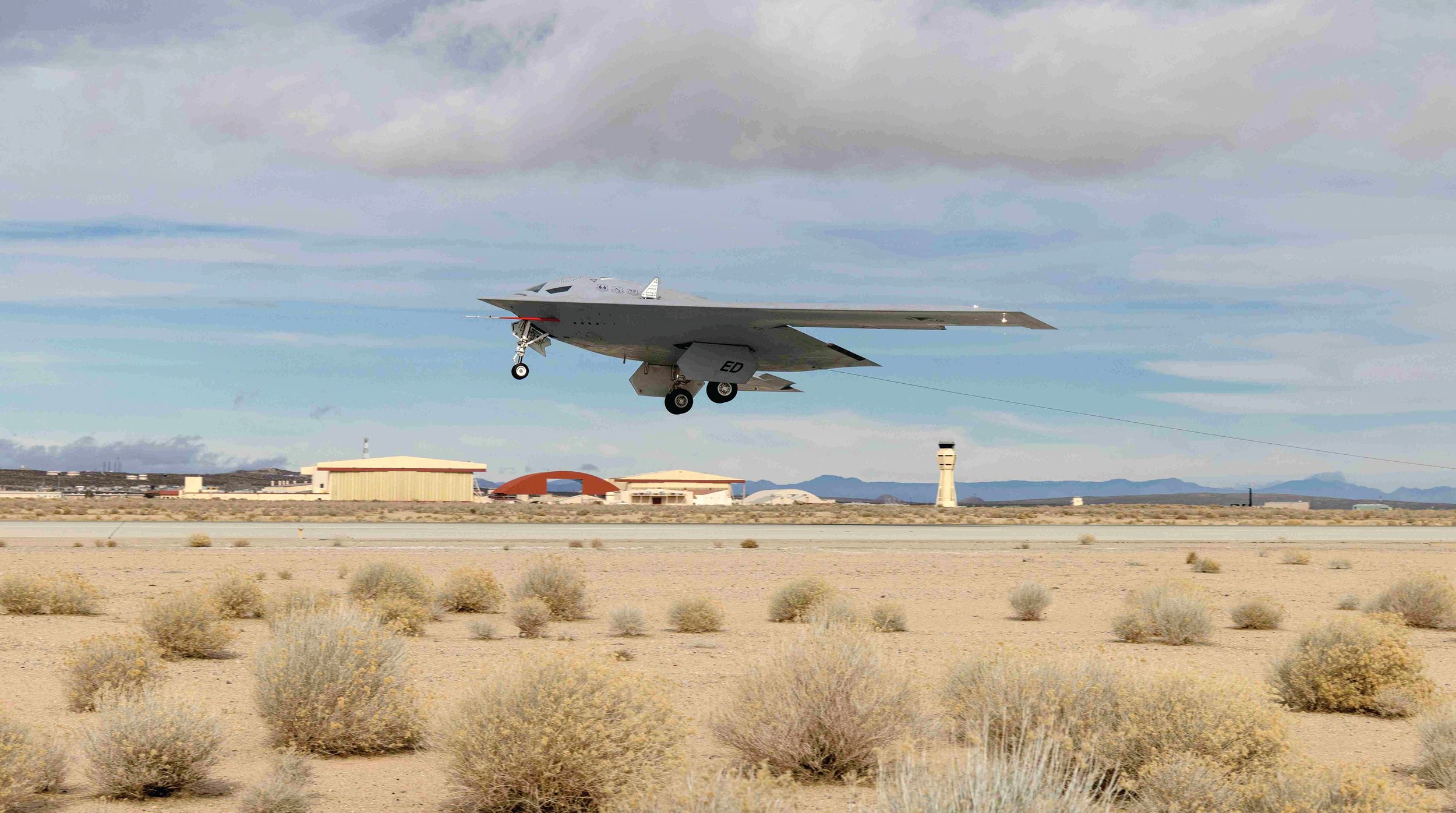
“It flies like a regular plane, but has some unique features,” Grant said. “When you fly her you’re right up on the front edge, so the perspective is very different, and it takes some real skill to refuel and to land.”
For Jack Northrop, creator of flying wing aircraft, the development of the Spirit came just in time. In April 1980, The Northrop Corp. got clearance to show a model of the B-2 stealth bomber to the 84-year-old, who reportedly said, “Now I know why God has kept me alive for the past twenty-five years.” Northrop died in February, 1981.
Upgrades to the B-2’s flight systems, communications and payloads are (and have always been) constant, keeping it in its long-established membership of the West’s triumvirate of nuclear deterrence with land- and submarine-based intercontinental ballistic missiles.
A successor for the Spirit, the B-21 Raider, is in the works, and should lift off before the end of the decade. It will fully incorporate all advancements since Spirit’s emergence four decades ago.
Raider is envisioned as the core of America’s future air power through an untouched degree of capability and flexibility made possible by its advanced integration of data, sensors and weapons. Outfitted for both conventional and nuclear payloads it will surpass all earlier systems in simple effectiveness via its ability to employ a wide spectrum of stand-off and direct attack ordnance.
The B-21 will be central in the support of the United States’ policy of strategic deterrence. There will be literally no target in the world that will be out of the Raider’s range, and it will spearhead its country’s family of systems aiming at supplying intelligence, surveillance and reconnaissance, electronic attack and multi-domain networking. Its flexibility and versatility will make it the ultimate in the safeguarding of national/ international security.
Stealth technology has even expanded into unmanned probes that provide invaluable eyes in the sky over hostile lands and keep the Free World apprised of what its enemies are up to. The 30th Reconnaissance Squadron was made operational on September 1, 2005. Utilizing the Lockheed-Martin RQ-170 Sentinel drone it has had far-reaching and significant impact.
Its deployment to Afghanistan and South Korea may have been specifically to monitor Pakistan and North Korea’s ballistic missile programs. During the May 2, 2011, assault in which the United States Naval Special Warfare Development Group killed Osama bin Laden an RQ-170 loitered overhead, watching for the possible approach of Pakistani military elements and listening to the area’s radio transmissions in case a hostile alert was sounded. Secure in the knowledge that the drone would sound the alarm if needed, the commandos were able to carry out their mission undistracted.
In April 2012 Iranian General Amir Ali Hajizadeh claimed during a televised interview his government had in its possession a captured Sentinel, and was using it to reverse engineer their own version of the spy craft. In September 2016 the Iranian Tasnim News Agency revealed the introduction of an armed drone it called Saegheh-2. In February 2018, during the Israeli-Syrian incident, the Israelis shot down one of these copies, and General Tomer Bar said it did indeed closely resemble the Sentinel.
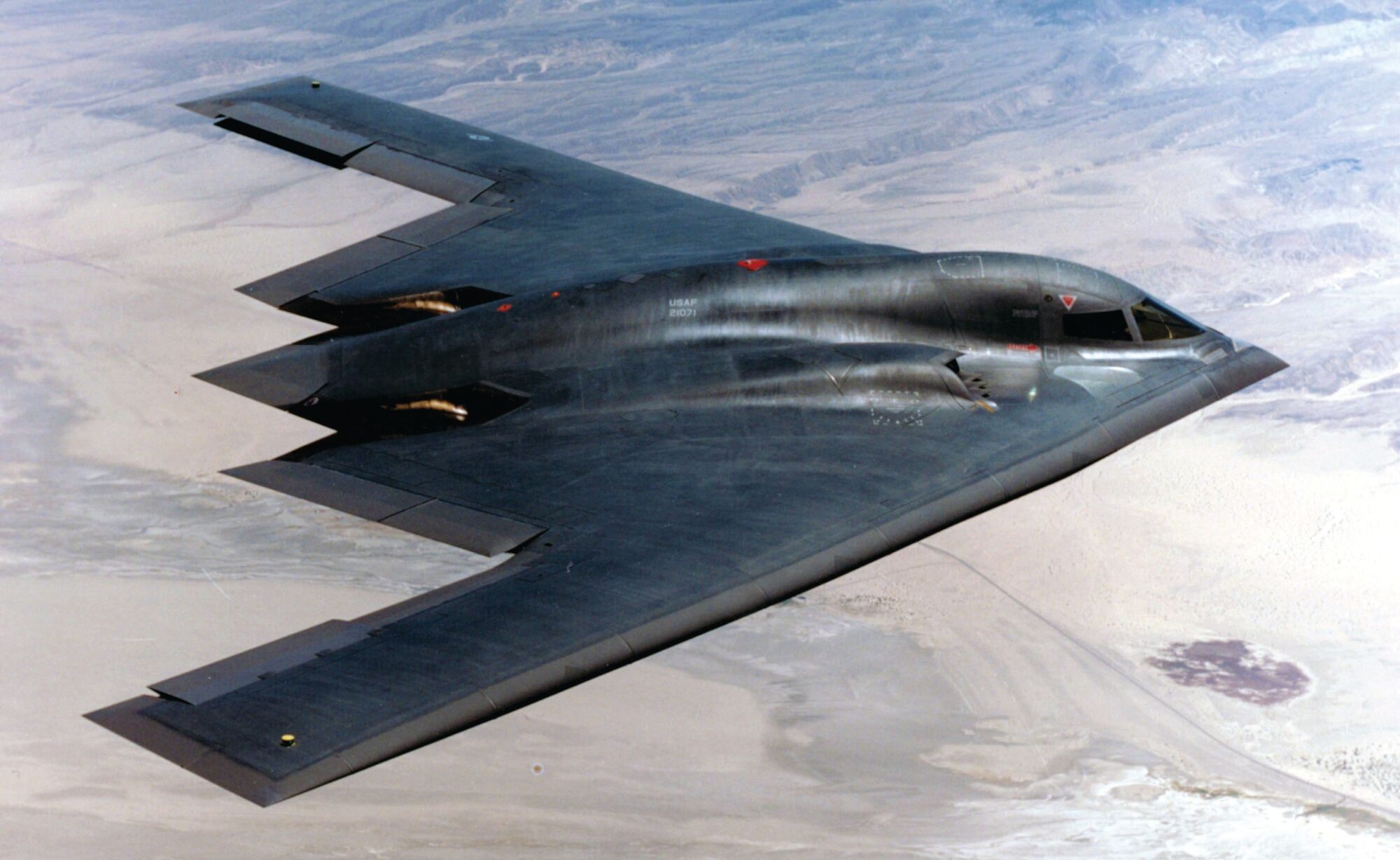
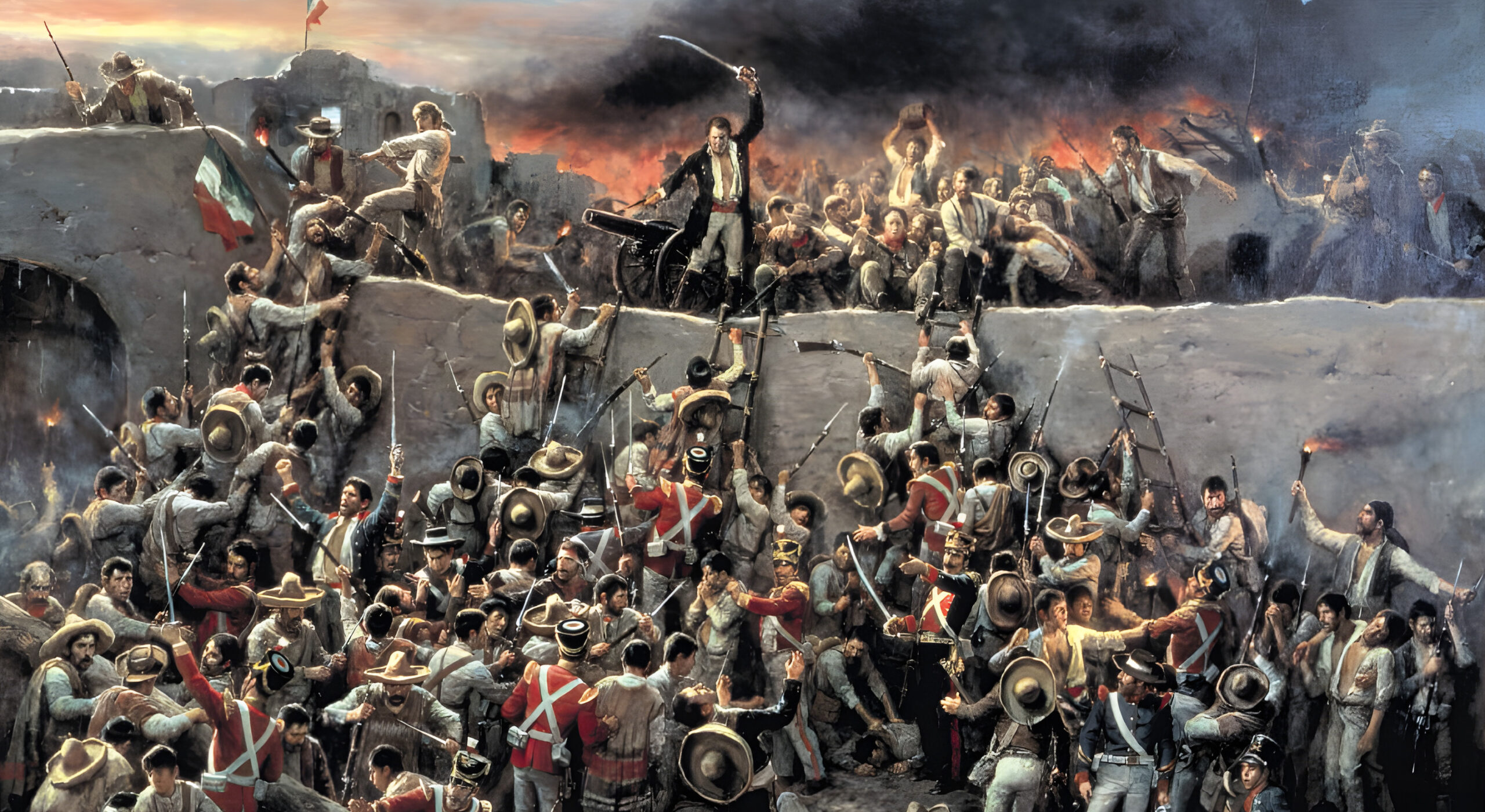

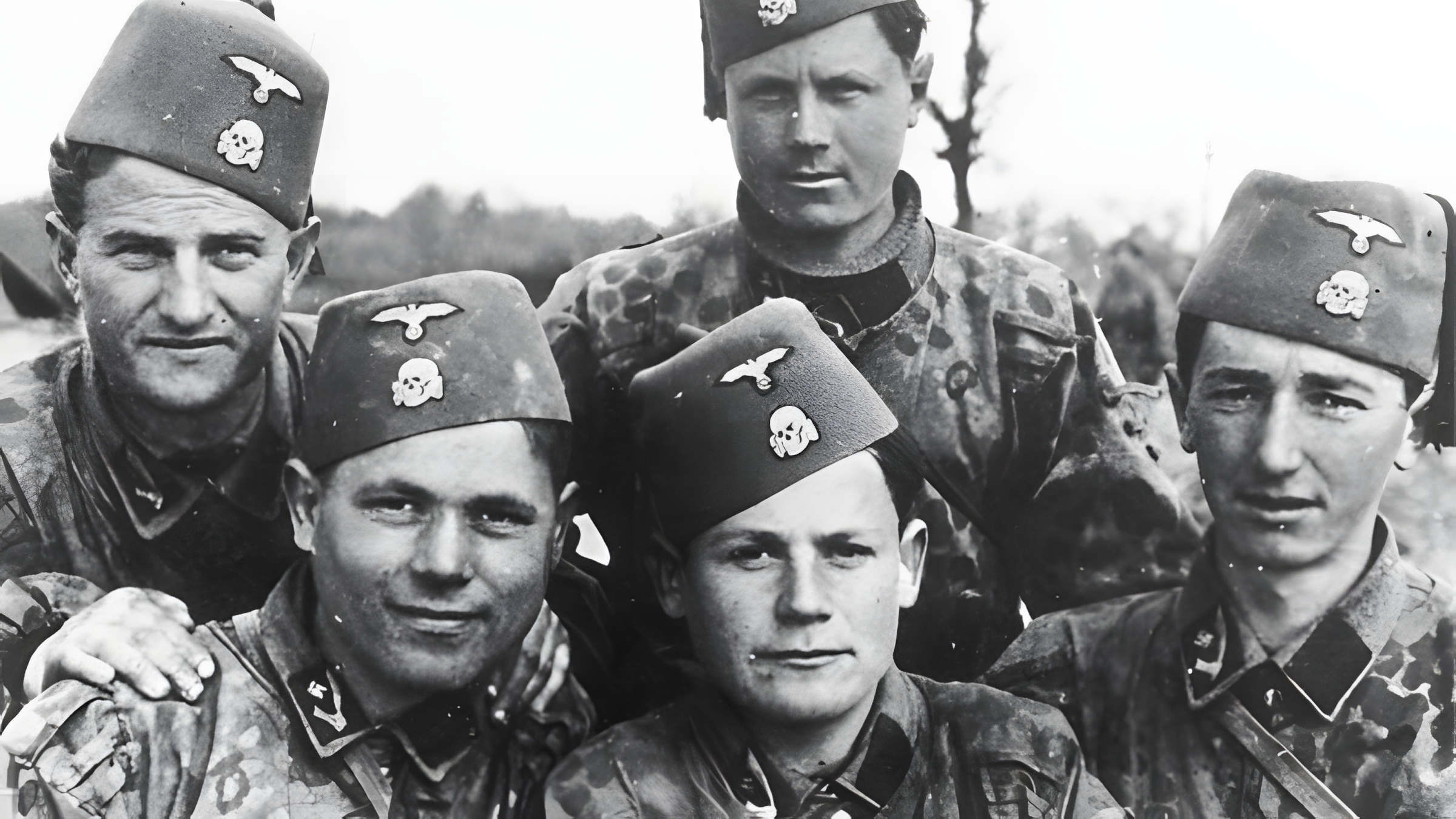

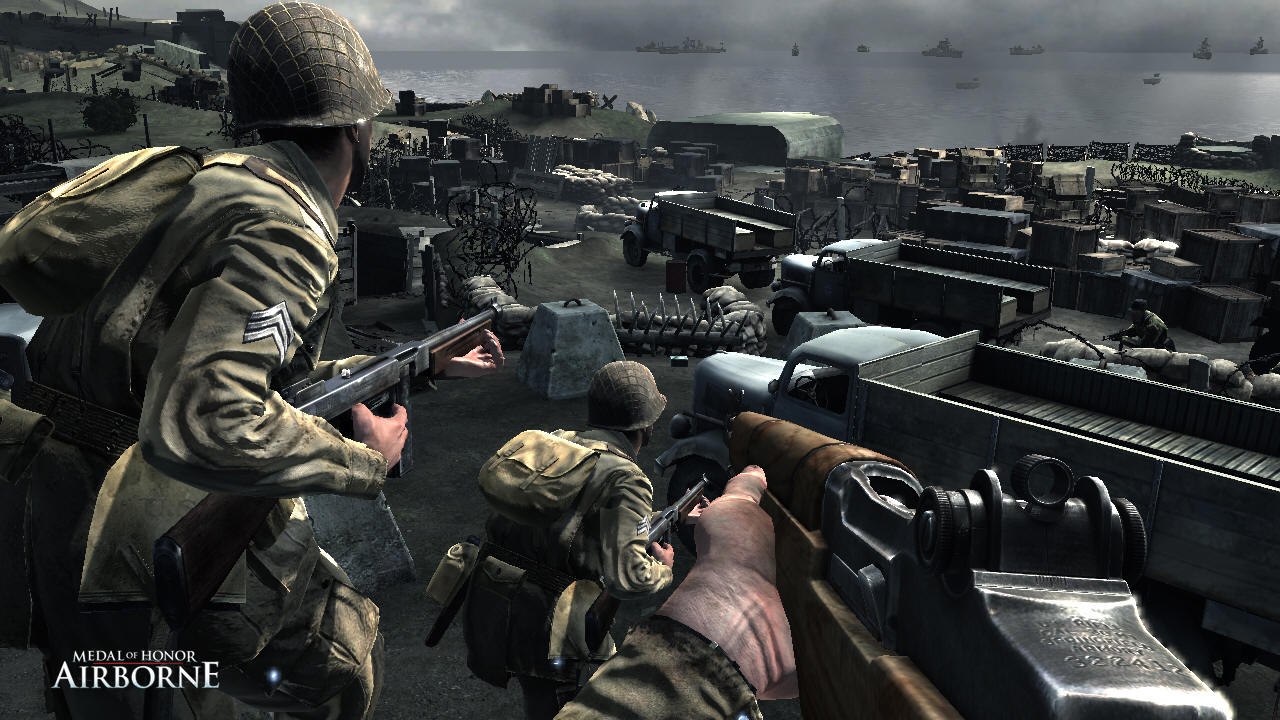
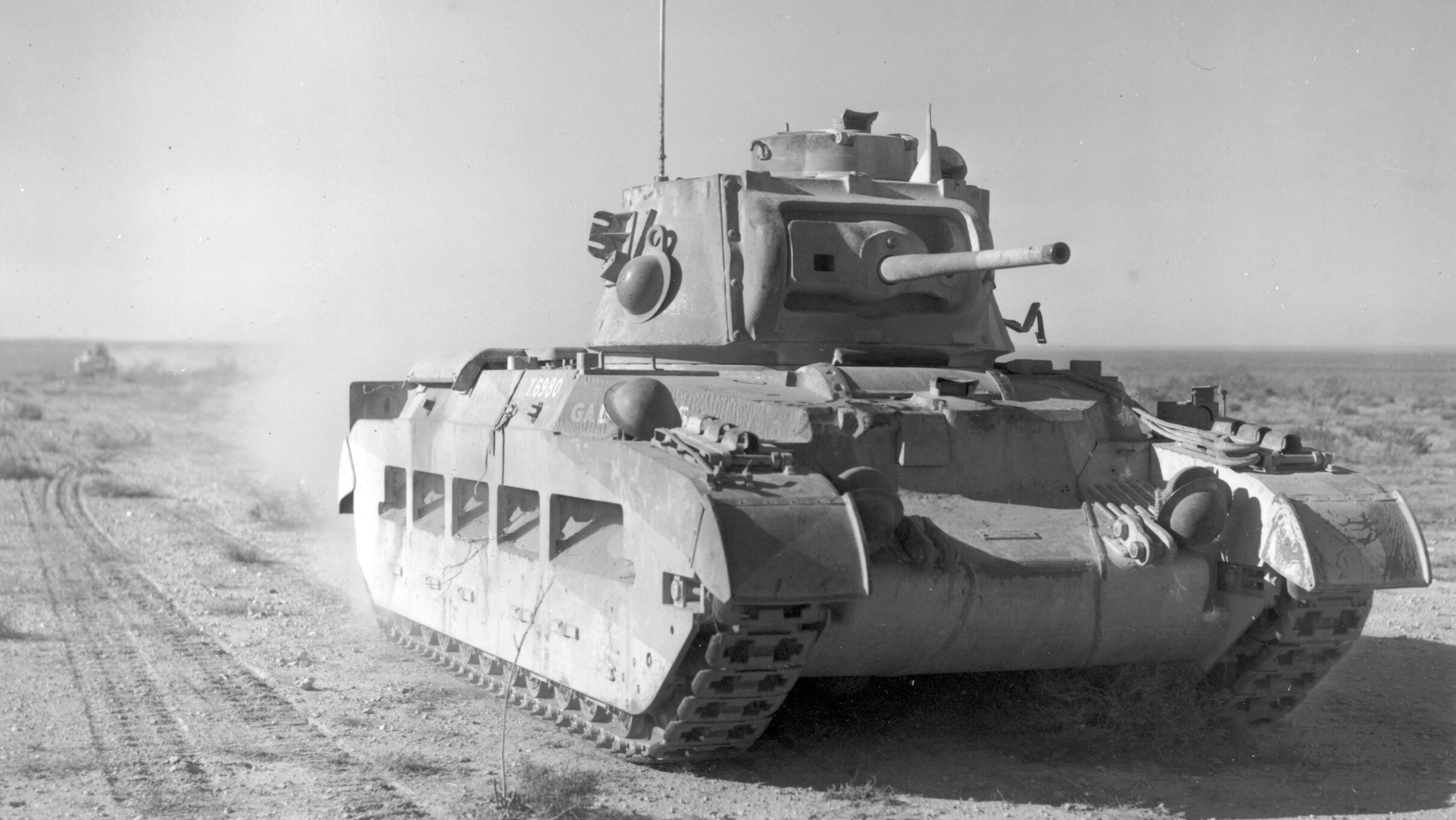
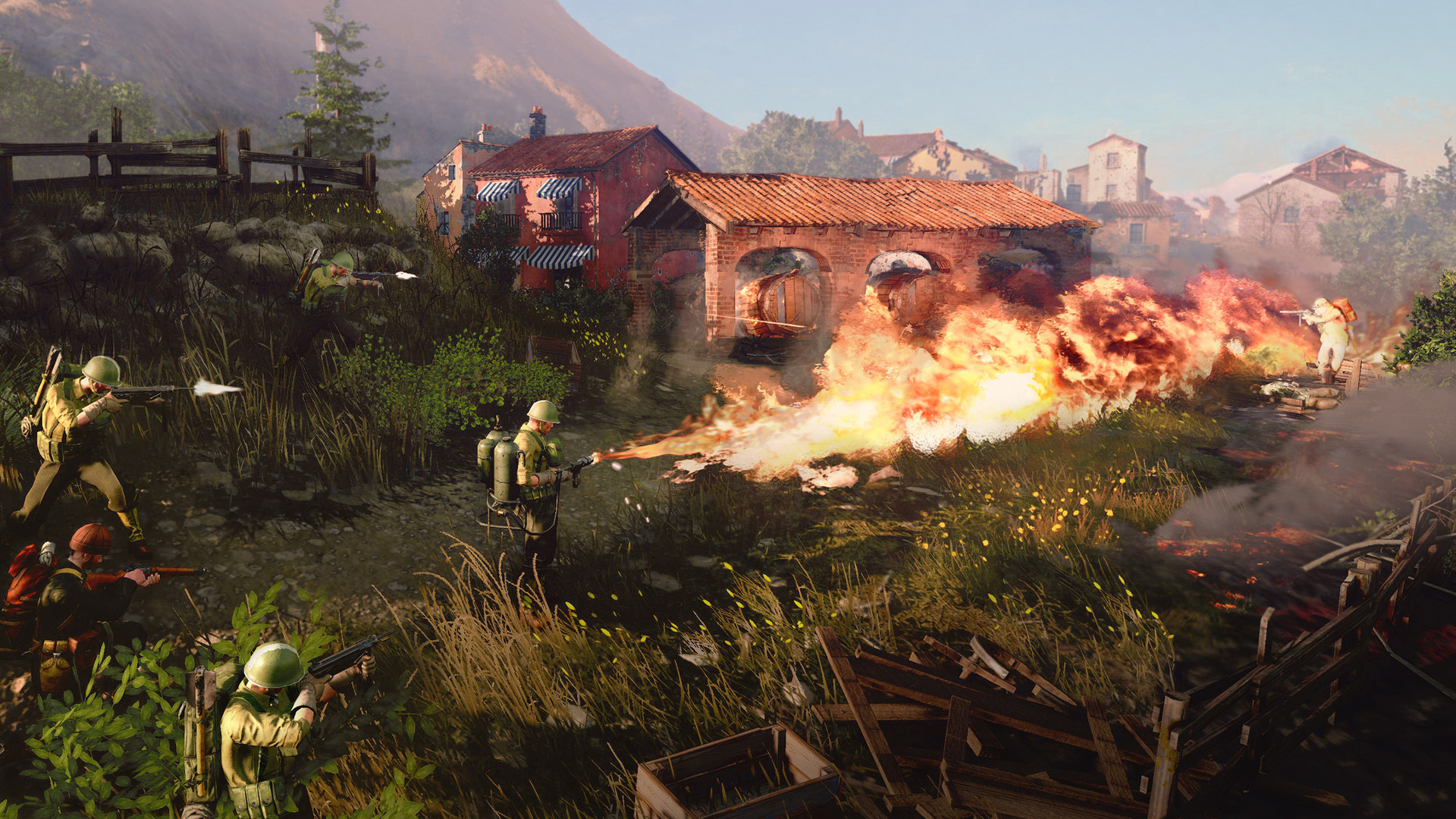
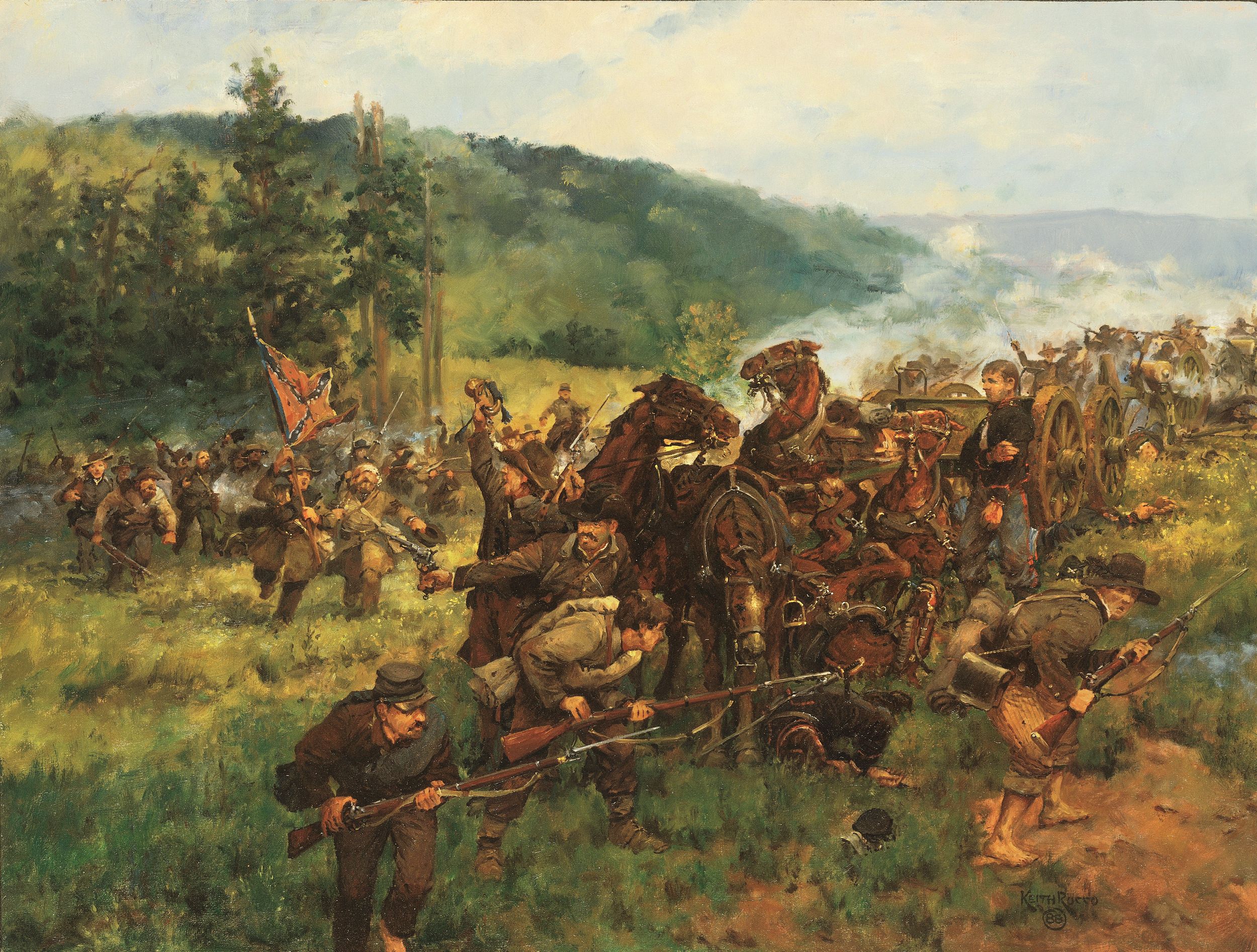
Having worked for Northrop during the 80’s this article is very accurate, at least as far as what can be said without a security clearance. I remember everyone being so happy when we found out that Jack had been shown the design. He is an under recognized aircraft designer, definitely in the league of Kelly Johnson.